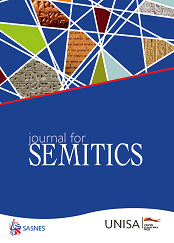Abstract
Anaphora, that is, backwards-referring relations, are well-known in language and include such common items as a variety of pro-forms (it, that, myself, each other) and even adverbs (so). Lesser studied are forward-referring relations, i.e., cataphora. Biblical Hebrew utilises a variety of anaphoric relations, though it lacks a true reflexive anaphor. This study will introduce the investigation of anaphora from a generative syntactic perspective, then proceed to a survey of the features of Biblical Hebrew anaphora, and finally conclude with a discussion of anaphoric complexities that require future attention.
Publication Type
- Article
Journal Name
Journal for Semitics
Volume Number
28
Issue Number
2, pp. 1-15
ISSN/ISBN
2663-6573



